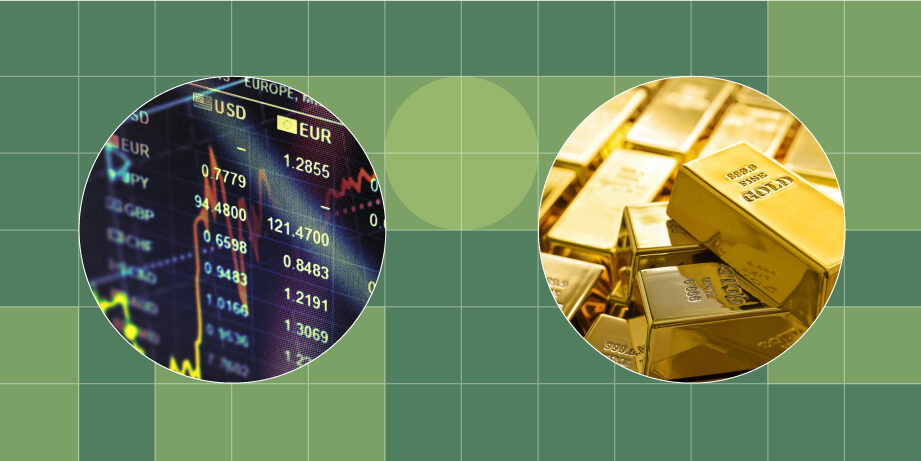Market commentary bonds: The beginning of the rate cut cycle
In September 2024, the Fed began its cycle of interest rate cuts. Interest rates fell across the board and prices for risk assets rose. While the Fed is walking a fine line between supporting the economy and avoiding a resurgence of inflation, the current policy has triggered short-term euphoria, as Dr Harald Henke explains in his market commentary.


Dr. Harald Henke
Head of Fixed Income Strategy
The US central bank has started to cut interest rates, …
After the Bank of England, the ECB and the Bank of Canada had already begun their cycle of interest rate cuts, the Federal Reserve followed suit in the third quarter of 2024. In a long-anticipated and higher-than-expected interest rate cut, the central bank lowered US interest rates by a full 50 basis points to a cap of 5.0% after 5.5% in the previous months. A further cut by 50 basis points is considered very likely.
At the same time, the Fed also published the expectations of its board members with regard to the future interest rate path. These estimates, published every three months and known as the “dot plots”, signalled massive changes on the part of the central bank with regard to the forthcoming interest rate policy.
Figure 1: Fed members’ estimates of the future interest rate path (median)
As the chart shows, the Fed has lowered its expectations for interest rates at the end of 2024 and the end of 2025 by an average of 75 basis points, i.e. three additional interest rate cuts, within one quarter. Instead of 5.25%, interest rates are now expected to be 4.5% at the end of 2024 and 3.5% instead of 4.25% in 2025.
This massive change has also left its mark on the interest rate markets. Interest rates on government bonds fell noticeably on both sides of the Atlantic.
Figure 2: Interest rate development in the US and in Germany
In the USA, the two-year yield fell by 1.2 percentage points to 3.5%, while in Germany it fell by 70 basis points to 2.1%. Ten-year interest rates also fell, but not quite as sharply as the short end of the curve. Due to the outperformance of short-term interest rates, the yield curve is no longer inverted in both Germany and the USA – a change that is often associated with the start of a recession.
… because the economy is showing signs of weakness
A weakening of the economy is now also visible in the USA. The US labour market is no longer showing the strength it previously displayed – although this strength was partly exaggerated. For example, more than 800,000 jobs fell victim to the data revision this year. These jobs were supposedly created but later turned out not to exist. The Philadelphia Fed had already hinted at something similar in March.
While the labour market tends to be a lagging indicator for the economy, leading indicators such as the purchasing managers’ indices (PMIs) for the manufacturing sector are also weak. While the figures for Germany remain deep in recessionary terrain, the US figure has now also fallen well below the expansion threshold of 50.
Figure 3: US Purchasing Managers’ Index and key components
The manufacturing PMI in the US slipped to a level of around 47 and thus significantly below the 50-point mark. In addition, the ratio of new orders to inventories, which is a leading indicator for the PMIs, fell sharply in September, suggesting a further decline in the PMIs in the coming months. Overall, the economic picture in the US is far less favourable than before, which was one of the main reasons for the central bank’s interest rate cut.
Markets react euphorically
Because interest rates were cut significantly and further cuts are imminent, but the economic picture still left open the hope of a moderate slowdown, risk assets staged a rally.
Figure 4: Credit spreads in Euro IG and Global IG
After credit spreads bottomed out in Q2 and political events such as the elections in France led to temporary spread increases, euphoria set in with the start of interest rate cuts in the US, which led to a resumption of the spread rally. In the USD IG universe in particular, the market approached the year’s lows again. The euphoria was additionally fuelled by an extensive stimulus programme by the Chinese government for the domestic economy.
Commodities also reacted with price surges. The Bloomberg Commodity Index rose by 7.5% in the last three weeks of September in the wake of monetary easing, while the price of gold in particular rushed from one all-time high to the next.
Figure 5: Gold at all-time high
The recent increases in the gold price are due to a mixture of hedging geopolitical risks, evasive investments due to sanctions and hedges against a resurgence of inflation.
What can we expect for Q4/2024?
The central banks have to walk a tightrope. On the one hand, they are trying to mitigate the economic slowdown by cutting interest rates; on the other hand, there is a risk of inflation flaring up again if they act too aggressively. Accordingly, market participants are using both the bond market and inflation hedges such as gold to hedge against all eventualities.
However, as long as the economy does not weaken further, the stimulating impulse of significantly lower interest rates should dominate and continue to support risk assets. As in the last two years, we could be in for a very favourable fourth quarter, possibly even a year-end rally.


